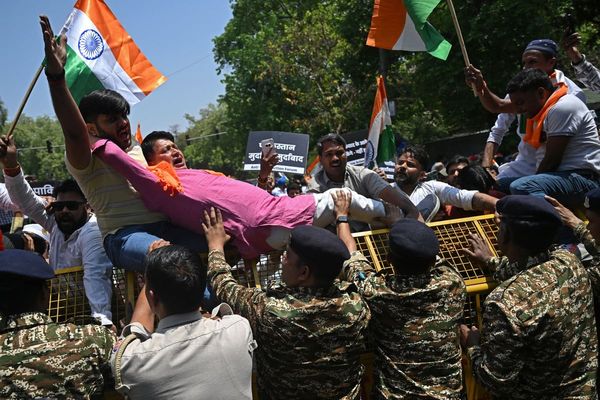THE UN Security Council has approved its first resolution endorsing a ceasefire plan aimed at ending the ongoing bombardment of Gaza by Israel.
The resolution welcomes a ceasefire proposal announced by President Joe Biden that the United States says Israel has accepted.
It calls on Hamas, which initially said it viewed the proposal “positively”, to accept the three-phase plan.
It urges Israel and Hamas “to fully implement its terms without delay and without condition”.
The resolution, which the council voted 14-0 in favour, with Russia abstaining, urges Israel and Hamas “to fully implement its terms without delay and without condition”.
Earlier on Monday, US deputy ambassador Robert Wood told reporters that the US wanted to make sure all 15 Security Council members were on board to support what he described as “the best, most realistic opportunity to bring at least a temporary halt to this war”.
Council diplomats speaking anonymously shortly before the vote said it was still uncertain what Russia and China would do.
Whether Israel and Hamas agree to the three-phase ceasefire plan remains in question.
Israeli Prime Minister Benjamin Netanyahu has said that Biden presented only parts of the proposal and insisted that any talk of a permanent ceasefire before dismantling Hamas’s military and governing capabilities is a nonstarter.
The leaders of Hamas and Palestinian Islamic Jihad met in Qatar on Monday to discuss the proposed ceasefire deal and said in a statement afterwards that any deal must lead to a permanent ceasefire, a full Israeli withdrawal from the Gaza Strip, an end to the Israeli siege of Gaza, reconstruction and “a serious exchange deal” between hostages in Gaza and Palestinians held in Israeli jails.
Israel's continued bombardment began following Hamas’s surprise October 7 attack in southern Israel that killed around 1,200 people, mainly Israeli civilians, and saw about 250 others taken hostage. About 120 hostages remain, with 43 pronounced dead.
So far, Israel’s military offensive has killed more than 36,700 Palestinians - many of them women and children - and wounded in excess of 83,000 others, according to the Gaza Health Ministry. It has also destroyed about 80% of Gaza’s buildings, according to the UN.

The Security Council adopted a resolution on March 25 demanding a humanitarian ceasefire in Gaza during the Muslim holy month of Ramadan which ended on April 9, with the US abstaining. But there was no halt to the war.
The current draft resolution underscores “the importance of the ongoing diplomatic efforts by Egypt, Qatar and the United States aimed at reaching a comprehensive ceasefire deal, consisting of three phases”.
US secretary of state Antony Blinken is on his eighth trip to the Middle East since October 7 pursuing that goal.
Biden’s May 31 announcement of the new ceasefire proposal said it would begin with an initial six-month ceasefire with the release of hostages in exchange for Palestinian prisoners, the withdrawal of Israeli forces from populated areas in Gaza and the return of Palestinian civilians to all areas in the territory.
Phase one also requires the safe distribution of humanitarian assistance “at scale throughout the Gaza Strip”, which Biden said would lead to 600 trucks with aid entering Gaza every day.
In phase two, the draft resolution says that with the agreement of Israel and Hamas, “a permanent end to hostilities, in exchange for the release of all other hostages still in Gaza, and a full withdrawal of Israeli forces from Gaza” will take place.
Phase three would launch “a major multi-year reconstruction plan for Gaza and the return of the remains of any deceased hostages still in Gaza to their families”.
The resolution’s final draft would underline that the proposal says if negotiations take longer than six weeks for the first phase, “the ceasefire will still continue as long as negotiations continue”.
It would welcome “the readiness of the United States, Egypt and Qatar to work to ensure negotiations keep going until all the agreements are reached and phase two is able to begin”.
The final draft rejects any attempt to change Gaza’s territory or demography, or reduce its size, but drops wording that specifically mentioned the reduction by officially or unofficially establishing “so-called buffer zones”.
It also would reiterate the Security Council’s “unwavering commitment to achieving the vision of a negotiated two-state solution where two democratic states, Israel and Palestine, live side by side in peace within secure and recognised borders”.
And it would stress “the importance of unifying the Gaza Strip with the West Bank under the Palestinian Authority”. This is something Mr Netanyahu’s right-wing government has not agreed to.







